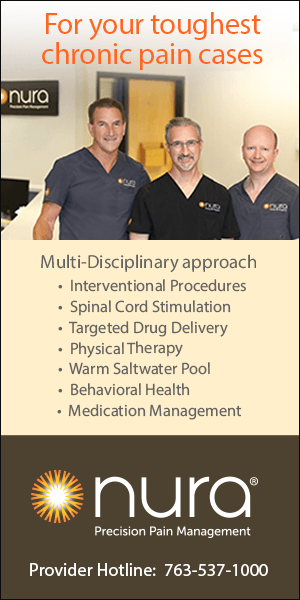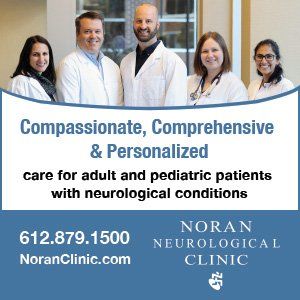is well-established that up to 40% of patients who present in primary care have a diagnosable mental illness, and that more than 70% of all clinical presentations carry some kind of exacerbating psychosocial foci (e.g., workplace stress, housing instability, unemployment, institutional racism, legal troubles, academic struggles). These statistics are arguably more diverse – and often higher – across secondary and tertiary care environments.
Public Health
Engaging Families in Health Care
Everybody Wins
By Tai Mendenhall, Ph.D., LMFT and Aalaa Alshareef, MS, LAMFT
What appears less universally agreed-upon – or even recognized – is the role(s) that patients’ families play in health, wellness, illness, disease, injury, and/or recovery. Modern Western medicine conventionally focuses on one-patient at-a-time. Patients’ physical illnesses, mental health struggles, and psychosocial stressors are usually addressed absent consideration of family dynamics. Our third-party payers and HIPAA rules reinforce this practice.
But families play important roles in the lives of our patients. They can be a source of support or a source of stress; they can be part of a solution or part of a problem. They are almost always “there” somehow, and are consequently influential to the courses and outcomes of medical advice. They can be attended to and included; they can ignored or excluded (purposefully or passively). We argue that they be included and purposefully attended to.
Data Talk: Families are Important
Proponents of the “medical home” – from pediatric to geriatric care contexts – agree.
The Joint Principles of the Patient-Centered Medical Home (PCMH), advanced by the American Academy of Family Physicians, American Academy of Pediatrics, American College of Physicians, and the American Osteopathic Association, call for physicians to engage with patients and their families in active partnership(s) across all care processes so as to improve health.
Training future physicians to comfortably engage with patients’ families is essential.
Compelling data – across both individual studies and systematic reviews – are emerging to support such efforts. In primary care, family medicine studies have long-paired the inclusion of family members in preventive and therapeutic interventions to positive outcomes (e.g., physical activity, blood pressure, metabolic control, dyslipidemia, smoking, overall cardiovascular risk). In pediatrics, stalwart support for the involvement of multiple family members in treatment is extant for care targeting child/youth diabetes, asthma, and obesity. In internal medicine, similar trends are recognized in the treatment of patients with multiple and complex morbidities, including diabetes (and other weight-related foci) and substance use/abuse.
Examples supporting the inclusion of families in secondary care include: intensive care practices involving families have been paired with greater trust for care teams, satisfaction with care-related decision-making, and patient/provider consensus in decision-making. In OBGYN contexts, family-inclusion in care is well-established in the reduction of perinatal distress, allayment of chronic genital pain, and improved coping with unexpected pregnancy termination for fetal abnormality. In emergency medicine, family involvement is strongly predictive of reduced psychological distress and improved follow-up with discharge planning. In oncology, it outperforms individual approaches in the promotion of coping, improved problem-solving skills, decreased psychological distress, and reduced depression. In psychiatry, including families in care has shown superior outcomes in the treatment of ADHD, anxiety, PTSD, depression, and suicidal ideation.
Examples of compelling data in tertiary care are also myriad. In palliative and hospice contexts, including families in treatment is strongly predictive of improved patient/caregiver coping, increased self-efficacy, better quality-of-life, and reduced caregiver burden. In endocrinology, diabetes-related outcomes (e.g., A1c, BMI, BP, dietary practices, physical activity) are consistently better when care includes patients’ family members as opposed when patients are treated in isolation from them. In alcohol and drug treatment, family-interventions almost universally outperform individual care for use/abuse of substances (ETOH, opioids, etc.) and other addictions (gambling, pornography, etc.) across both adolescent and adult samples.
Everybody Wins
The inclusion of family members in treatment processes within other care environments and target populations that do not fit neatly into conventional primary, secondary, or tertiary “boxes” are also being evaluated. These include – but are not limited to – community health centers, community-engaged (i.e., “push” vs. “pull”) initiatives, disaster response teams, spiritual care, employee assistance programs, and military / veteran health systems. All show promise for the inclusion of family members in the care of individual patients, alongside outcome data that support doing it.
It is also important to note that including patients’ families in care, regardless of where the care is positioned and/or who the patients are, saves money. From improved health per se (which means less money paid-out by 3rd party payers for visits, prescriptions, procedures, etc.) to reduced frequency of acute and/or emergency visits (which cost a great amount of money from intake to all points forward) and reductions in “frequent-fliers” (who repeatedly take-up valuable appointment slots and otherwise encumber clinic scheduling), the administrative worlds of health care benefit from all of this too. And finally, data show that providers themselves benefit through improved job satisfaction, lower burnout rates, and higher staff retention. In short, everybody wins.
Are Families missing in Health Care?
Despite extant and growing data that support the inclusion of family members in care practices, it continues to be the “exception” as compared to the “rule” of treating patients in a vacuum. Responding to this circumstance effectively is complex and necessitates both thoughtful insight(s) regarding where we have been and realistic steps toward where we are going.
Training future physicians to comfortably engage with patients’ families is essential. However, it is not clear whether and/or how consistently our country’s medical schools are doing this. For example, the authors recently conducted a thematic analysis of the top-ten ranked (according to U.S. News & World Report) R-1 institutions’ course descriptions. We found no-to-minimal mention of communicating, working, and decision making with patients’ families. Follow-up inquiries to said schools’ administrative and curricular personnel – albeit with a low (30%) response rate – yielded comparatively favorable findings, wherein patient/family/physician communication was recognized as a learning objective. However, this objective was described as a “process” topic that comes up along the way – as opposed to a specifically articulated component of any specific classs content.
Patient/family/physician communication was recognized as a learning objective.
Reasons for the relative paucity of attention to working with patients’ families in medical education are numerous, and parallel reasons for why any other host of topics (e.g., health maintenance organization management, business modeling, public health planning, community engagement, team building, compassion-fatigue prevention / mitigation) are neglected. With only four years to adequately prepare students before residency, preference for time / attention to baseline domain knowledge is essential. The same can be said for residency training, insofar as no length- or amount- of education or timeframe is adequate to cover all foci that are required.
In post-residency practice, most physicians will not argue that families are important (they have families, too!). However, said physicians regularly and almost categorically reject engaging patients’ families in care because it will take too much time. This connects directly to what scholars across both biomedical and psychosocial fields call “time-famine”. Contemporary pressures to produce clinic revenue – to see 30, 50, or even more patients per day – communicate clearly to physicians that their “relative value units” (RVUs) are more important to job-security than the outcomes of the care that they provide.
Doing Something “New” without Doing “More”
Doing something “new” is almost always heard by busy students, residents, and established physicians as doing something “more”. This can be an impossible call, as outlined above, insofar as there is no room to do more. Further, such messages are easy to interpret as criticism – which are often then understandably met with defensiveness by trainees and/or professionals who are already working hard to meet the administrative quota-demands that they are under while synchronously offering high-quality care.
The good news here is that learning (and continuing) to include families is rarely something that requires more time. Classroom teachings about common ways that patients and families respond and adjust to a variety of illnesses, for example, could be integrated into existing year one courses or those that explicitly include multiple members in care (e.g., pediatrics, family practice). More sophisticated learning and skill sets related to family processes of adaptability, cohesion, and communication – and the manners in which these often change and/or respond to health-related situations and crises – could follow. Commonplace watch one, do one, teach one sequences could be integrated into internship and/or residency practices wherein novice trainees observe more-advanced trainees and/or faculty work with families, followed by working with families themselves (under appropriate supervision paired with feedback about strengths and areas for growth), followed by teaching newer cohorts the skills that they have learned.
In practice, physicians are presented daily with opportunities to encourage patients to invite family members into clinical visits. Examples of these opportunities, and the ways that families can help in the care are myriad: facilitating conversations about health decisions (e.g., birth control options, pros-and-cons related to different medications), medical interventions (e.g., elective surgeries, DNR directions), delivering bad news and/or assisting in the communication of such news to others (e.g., parents diagnosed with cancer disclosing it to their children), ongoing care processes (e.g., managing home-care services across multiple providers and/or agencies), health behaviors (e.g., sharing in dietary- and/or physical activity- activities in diabetes management, reminding / encouraging / ensuring compliance with medication regimens / routines, sobriety maintenance), and a variety of other care-related activities. We can improve outcomes when we include patients’ family members and other loved ones in our work. Doing this empathically, sensitively, curiously, and respectfully – and with appropriate regard for the complex ethnic/cultural, intergenerational, interpersonal, and other intricacies of “family” that patients bring with them will translate into better care.
Other – and overlapping – ways of engaging patients’ families in care do not require anything (“more”) from physicians other than a willingness to participate in the integrated care teams that PCMH advocates are calling for. As these teams slowly replace less effective models of practice, interdisciplinary efforts that engage behavioral care providers (e.g., medical family therapists, health psychologists) and other care advocates (e.g., social workers, care coordinators) can translate into non-physician providers engaging families on physicians’ behalf. Shared-charting, curbside consultations, joint problem-solving, and other collaborative efforts have all shown (through care outcomes, cost savings, etc.) that the energy is worth the effort. Third-party payers like BlueCross/BlueShield, CMS, HealthPartners, Medicare, and Medicaid, while not historically supportive of preventive (versus reparative) services, are quickly catching on to the value of these types of efforts and team-models.
Concluding Thoughts
Highly competent practice necessitates physicians’ purposeful attention to multiple systems – biological, psychological, relational/social – that patients inhabit (or that inhabit patients). And while most physicians are highly skilled in the physical and psychological arenas of their work, engaging patients’ families in health and health care is oftentimes not pursued. However, learning how to navigate these territories is worth the effort – and that “effort” does not need to take any more time away from providers who are already-overextended in terms of (un)available time. Patients benefit. So do their families. We do, too. Everybody wins.
Tai J. Mendenhall, Ph.D., LMFT, is a Medical Family Therapist and Associate Professor in the Couple and Family Therapy Program at the University of Minnesota (UMN) in the Department of Family Social Science. He is an adjunct professor and clinician in the UMN’s Department of Family Medicine & Community Health, and an Associate Director of the UMN’s Citizen Professional Center. He works actively in the conduct of integrated behavioral healthcare and community-based participatory research (CBPR) focused on a variety of public health issues.
Aalaa Alshareef, MS, LAMFT,
is a doctoral candidate in the Couple and Family Therapy Program at the University of Minnesota (UMN) in the Department of Family Social Science. She holds a Master of Science in Marriage and Family Therapy, and serves as a faculty member in a large Psychology department in Saudi Arabia.
MORE STORIES IN THIS ISSUE
















